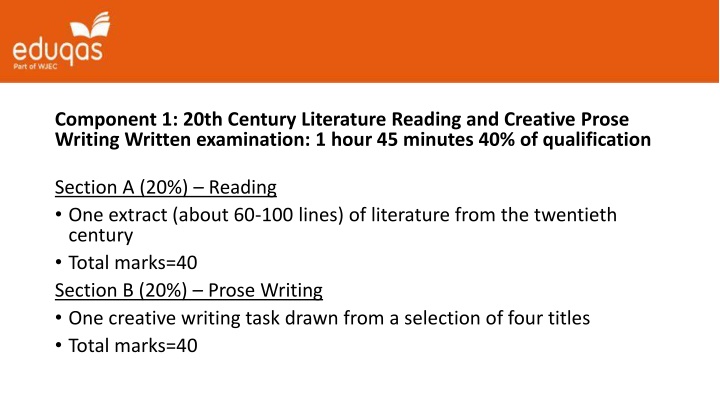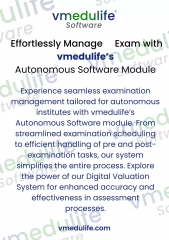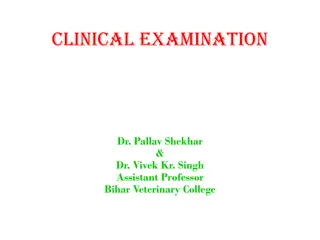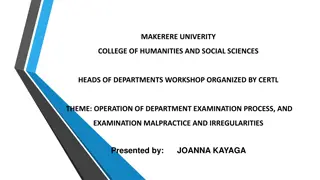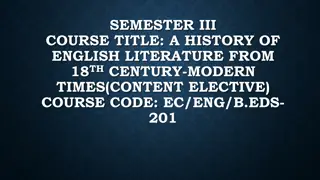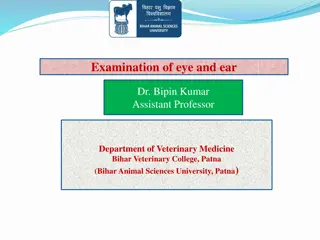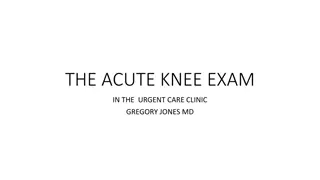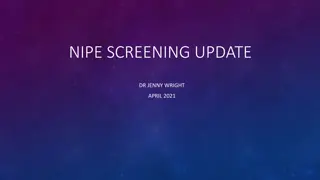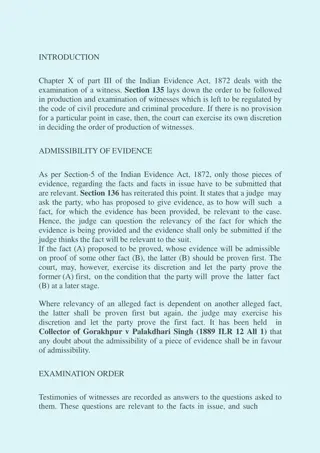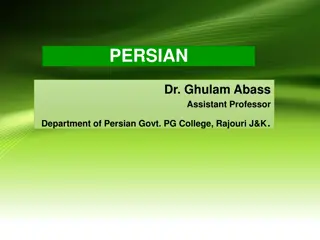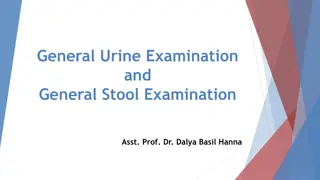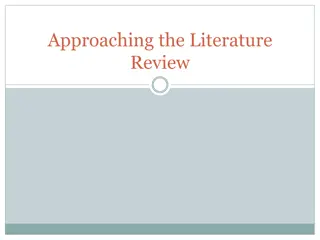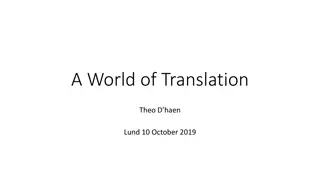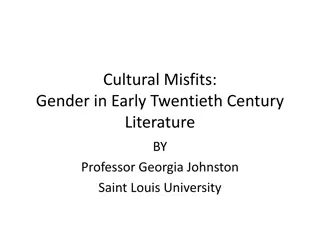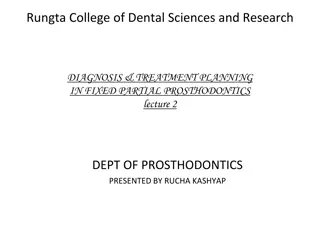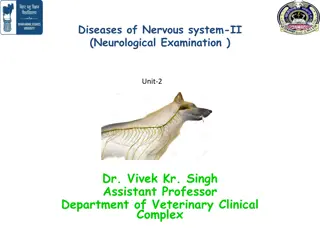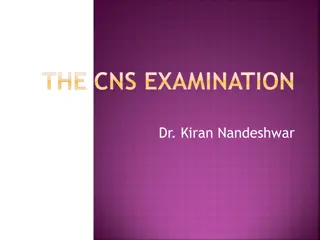Twentieth Century Literature Examination Guide
Components of a literature examination focusing on 20th-century works, including reading literary extracts and creative prose writing tasks. Learn about marking criteria, communication, organization, and developing writing skills through short stories and videos. Enhance creativity, vocabulary, and storytelling techniques for aspiring writers.
Download Presentation

Please find below an Image/Link to download the presentation.
The content on the website is provided AS IS for your information and personal use only. It may not be sold, licensed, or shared on other websites without obtaining consent from the author.If you encounter any issues during the download, it is possible that the publisher has removed the file from their server.
You are allowed to download the files provided on this website for personal or commercial use, subject to the condition that they are used lawfully. All files are the property of their respective owners.
The content on the website is provided AS IS for your information and personal use only. It may not be sold, licensed, or shared on other websites without obtaining consent from the author.
E N D
Presentation Transcript
Component 1: 20th Century Literature Reading and Creative Prose Writing Written examination: 1 hour 45 minutes 40% of qualification Section A (20%) Reading One extract (about 60-100 lines) of literature from the twentieth century Total marks=40 Section B (20%) Prose Writing One creative writing task drawn from a selection of four titles Total marks=40
Example Tasks Example Tasks 1) The Return. 2) Write a story which ends: and that wiped the smile off her face. 3) Write a story which ends: She gave a small wave, turned and walked away. 4) Write about a time when you tried to mend something. 5) Write a story which begins: We were now late and Mum had started to panic. 6) The Medal.
How will students be marked? How will students be marked? AO5 Communication and organisation 24 marks AO6 Vocabulary, sentence structure, spelling and punctuation 16 marks
Communication and organisation Communication and organisation
Communication and organisation Communication and organisation Give students the opportunity to read short stories Watch short videos as a starting point for writing Literacy Shed, Youtube Encourage students to write from personal experience an exam, first day at college Encourage students to focus on a moment in time so their plot is clear and writing is detailed Only 2/3 characters Avoid too much dialogue Practise endings Youtube Video The Present
Write a description of how the man must feel. Standing alone in my cell, I stare longingly Add a passage of dialogue between the man and a prison guard.
Detail, Originality and Imagination Detail, Originality and Imagination Pathetic fallacy use the 19th Century texts to explore this device Anaphora Semantic fields
Technical Accuracy Technical Accuracy 20% of the marks for the written exams to technical accuracy Regular spelling tests throughout KS3 and KS4 High expectations of literacy and a clear marking policy for literacy throughout the school Teach sentence construction and sentence variety
Sentence Construction Sentence Construction In the night street, shielded from view, he watched. He watched in the night street, shielded from view. In the night street, he watched, shielded from view. Shielded from view, in the night street, he watched.
Vocabulary Vocabulary Read character descriptions and ask students to focus on the verbs and adjectives and how they create effects Replace the verbs to create a different atmosphere Synonym lists Encourage students to use ambitious vocabulary
A giant of a man was standing in the doorway. His face was almost completely hidden by a long, shaggy mane of hair and a wild, tangled beard, but you could make out his eyes, glinting like black beetles under all the hair. The giant squeezed his way into the hut, stooping so that his head just brushed the ceiling. He bent down, picked up the door and fitted it easily back into its frame. The noise of the storm outside dropped a little. He turned to look at them all. Couldn t make us a cup of tea, could yeh? It s not been an easy journey He strode over to the sofa, where Dudley was frozen with fear. Budge up, yeh great lump, said the stranger. And here s Harry! said the giant. Harry looked up into the fierce, wild, shadowy face and saw that the beetle eyes were crinkled in a smile. The giant sat down on the sofa, which sagged under his weight, and began taking all sorts of things out of the pockets of his coat: a copper kettle, a squashy pack of sausages, a poker, a teapot, several chipped mugs and a bottle of amber liquid, which he took a swig from before starting to make tea.
Checklist Develop the plot with dialogue Story Structure Describe characters Content: Plan of key events Description of setting Description of character Simile, metaphor or personification Dialogue Ambitious vocabulary Variety of Punctuation . , ! ? : ; - Accurate Spelling Open with Dialogue Describe the setting Develop the plot End with an impact Protagonist Examples: Jekyll, Scrooge, Romeo, Juliet Appearance: Dishevelled Elegant Dainty Sparkling Muscular Slight Petite Adjectives: Personality: Amiable Considerate Candid Eager Humorous Curious Verbs: Smiled Beamed Laughed Mumbled Muttered Pleaded Sobbed Sentence Structures A complex sentence When she was younger, she lived in the countryside. A simple sentence The door slammed shut. Beginning with a verb Bursting into the classroom, the teacher yelled at the students. Beginning with an adverb Angrily, she slammed the door. You re You are Your It belongs to you They re They are Their It belongs to them There A place We re We are Were Past tense of are Where A place To Indicates motion Too Also or excessively Two The number 2 Antagonist Examples: Tybalt, Hyde Adjectives: Personality: Cruel Malicious Devilish Intimidating Severe Condescending Verbs: Barked Snarled Threatened Smirked Mocked Sneered Scowled Appearance: Wrinkled Grotesque Wild Scarred Expressionless Hunched Pallid
